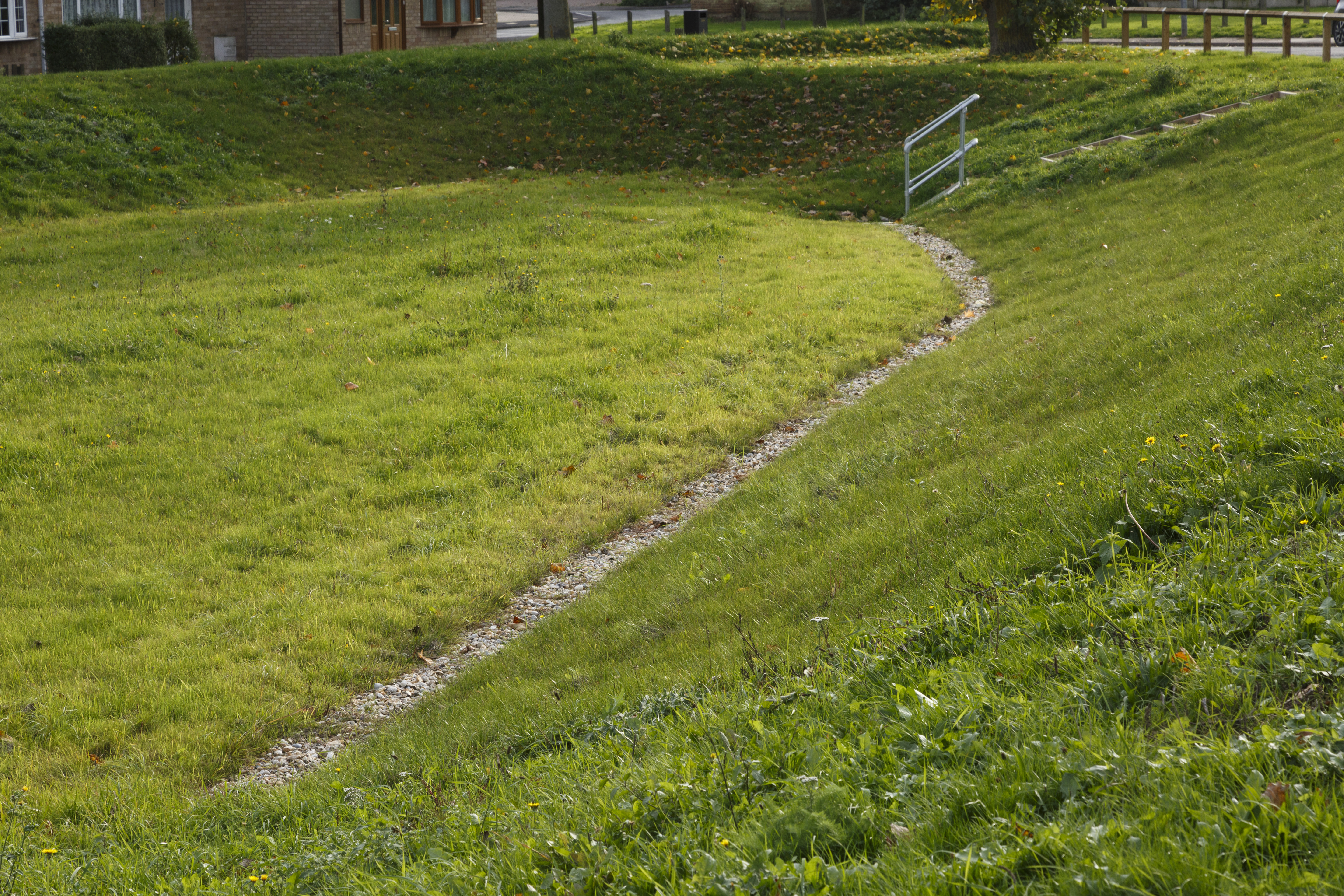Attenuation Storage
Where discharge rates have to be restricted, attenuation storage should be utilised in order to prevent flooding.
| What the LLFA expect to see At the full application stage, it should be shown that the attenuation storage provided can provide enough storage for all storms up to the 1 in 100 year plus climate change storm event. Additionally, it should be shown that all attenuation features can either have 50% capacity available 24 hours after a 1 in 30-year storm event or have the capacity to store a subsequent 1 in 10-year storm event after a 1 in 30-year storm event. |
The provision of storage helps to reduce flooding whilst helping to control the peak allowable runoff rate. In addition, well-designed SuDS schemes can significantly improve and promote biodiversity and amenity in an area through the use of above ground storage.
Storage should be provided to manage all storms up to and including the 1 in 100-year storm event plus climate change. Above ground storage should primarily be considered in order to enhance biodiversity and green areas. If above ground storage is not proposed the LLFA will need to be satisfied through evidence the reasons why it is not feasible. The provision of SuDS and green infrastructure provides numerous socio-economic benefits and is consistent with national and local policies in seeking to conserve and where appropriate enhance biodiversity. In order to minimise the land take associated with SuDS features in developments wherever possible, above ground storage should be integrated with public open space. The integration of above ground storage and open space does not always have to be in the form of an empty detention/infiltration basin. Where possible, basins and amenity features such as informal play areas can be merged to create multifunctional spaces. By doing so, the amenity of the basin is greatly enhanced whilst still providing its primary purpose.
Any site subject to unplanned development, for example through permitted development rights, should account for an additional 10% of roof area within the storage calculations to accommodate for urban creep.
Where necessary, suitable features should be provided upstream of attenuation storage to prevent the build-up of silt and sediment which would have a negative effect on the storage volume provided. This can be achieved through features such as sediment forebays, permeable paving, swales etc. Furthermore, appropriate maintenance measures should be in place to retain the capacity within storage features over the longer term.
When developing on a flood plain, either partially or entirely, attenuation storage should be avoided, where possible, from being located within the defined flood plain. If attenuation storage is necessary on a flood plain, then it should be designed in a way that does not affect the areas capacity to cope with flooding from fluvial sources.
Page updated: 17/02/2020
